Kia ora koutou
Today marks the end of my first one hundred days in the role – a good time to post my first reflection. I committed to spending this time listening to as many people and visiting as many institutions as possible to hear their views on my role as Chief Science Advisor to the Prime Minister, Kaitohutohu Mātanga Pūtaiao Matua ki te Pirimia, and how they thought that science – in its very broadest sense – could be better harnessed to inform government policy to benefit Aotearoa New Zealand. I’ve had a pretty packed schedule and have highlighted most of my journey on Twitter (you can see this @NZChiefSciAdvisor, or you can see some highlights below).
My first conversations were with the Departmental Science Advisors. There are a team of these independent advisors across various Ministries and they are a font of wisdom on how to best use scientific evidence to inform policy. I thank them for their generosity of time and wisdom as I began to absorb the full (slightly mind-boggling) scope of this role, which covers science in its most generic sense (what the Oxford English Dictionary defines as ‘knowledge acquired by study’). I’ve also met with several Ministers and many senior Ministry officials to gather their views on where independent advisors can most effectively inform policy. These views have been folded into discussions as to how the Departmental Science Advisors will formalise their monthly gatherings as a Science Advisory Board to the PMCSA (more on this in a later post.). The group of advisors has grown organically over time, and most were in agreement that a more formal structure was timely and would strengthen our activities. In particular, it gives us an opportunity to examine gaps in skills and experience around the table, and address demographic imbalances. Notably, there are no Māori advisors in the group, and I am listening to lots of views on the best way to strengthen what should be a very important aspect of our activities.

Juliet presents at a forum, held at Plant and Food Research in Mt Albert.
My next priority was to travel all around the country. What a privilege this was, to be welcomed to see the incredible work that is going on, and hear views of researchers, all passionate to make a difference. I met with senior leaders and emerging researchers in small groups, and ran some open forums to listen to the views of all staff. Since many scientists are introverts, I took Post-it notes with me to all the forums, and asked for one from each participant. This gave me a great snap shot of where the research and teaching community feel that research could make a real difference in informing Government policy. We also explored ideas about building trust in science and scientists, against a global trend of scepticism. More on this in a later post. I am hugely grateful for the turn-out at these forums: it was humbling to receive so many invitations, sense the interest in my role, and hear the support from the research community across the disciplinary spectrum. It was great to see the enthusiasm with which people contributed their ideas, and the positive energy in the room. Many of these discussions are being woven into our work plan, which I’ll post in November.
All the ideas are all up on our office wall now, and are coalescing into general topics from which specific projects will emerge. The selection needs to be mindful of the timetables of the people formulating policy.

To conclude, I met with the Prime Minister to share my journey and get her input and insights into how to prioritise the many possible pieces of work that my small team could undertake. We are now doing some scoping work on the top priorities and ensuring that the projects we undertake don’t duplicate advice streams elsewhere. More on this soon.
Throughout my tour, I was struck by the contrast between coverage of science in the media, which too often focuses on the threats that new technologies bring, and the palpable excitement that came from people as we chatted, about the opportunities their science opened up. As a science community, we need to better communicate this potential as part of our work. In this spirit of celebration, I’ve begun an Instagram account (@nz_chief_science_advisor) to try and capture some of this excitement. I am very happy to share your pictures too if you send them with a simple caption to PMCSAinfo@auckland.ac.nz.
All of these experiences and learnings are being woven into a strategy for the Office which we will make public, along with a series of periodic reflections on our work. Check back for thoughts on:
- Meet the team – small but perfectly formed
- A strategy for our Office: rigorous, transparent, inclusive and accessible.
- How the advising the Prime Minister works in practice, and how the independence of the Office is safeguarded
- A few contested concepts that threaten our social license to operate – science, independence and facts
- The work of the Departmental Science Advisors, and how we are formalising our team work as a Science Advisory Board
- Thoughts on how to make science more inclusive of all world views, and a more attractive career choice for people from all backgrounds
- What we will be working on, and how
- ‘If you can’t explain it simply, you don’t understand it well enough’ – introducing our information sheets
- How you can contribute to our work in synthesising evidence to inform policy
Ngā mihi

PS – it’s dangerous to pick favourites from a tour that has been so rich with experiences and ideas, but here are a few highlights:
Christchurch, Otautahi
As well as engaging forums at both the University of Canterbury and Lincoln, I discovered to my surprise, that NASA flies a mission out of Christchurch Airport each winter for a few weeks (read more about NASA’s SOFIA mission). I was lucky enough to get invited on an overnight trip to experience this first- hand. The converted Boeing 747 holds an infra-red telescope and flies to the stratosphere to gather data.
On the day I flew, we were looking at a black hole formation beneath the Milky Way. We also saw a stunning display of the Aurora Australis, which was breathtaking. Negotiations are underway to enable school teachers onto the flight – what an opportunity this will be to connect our kids to cutting edge research.
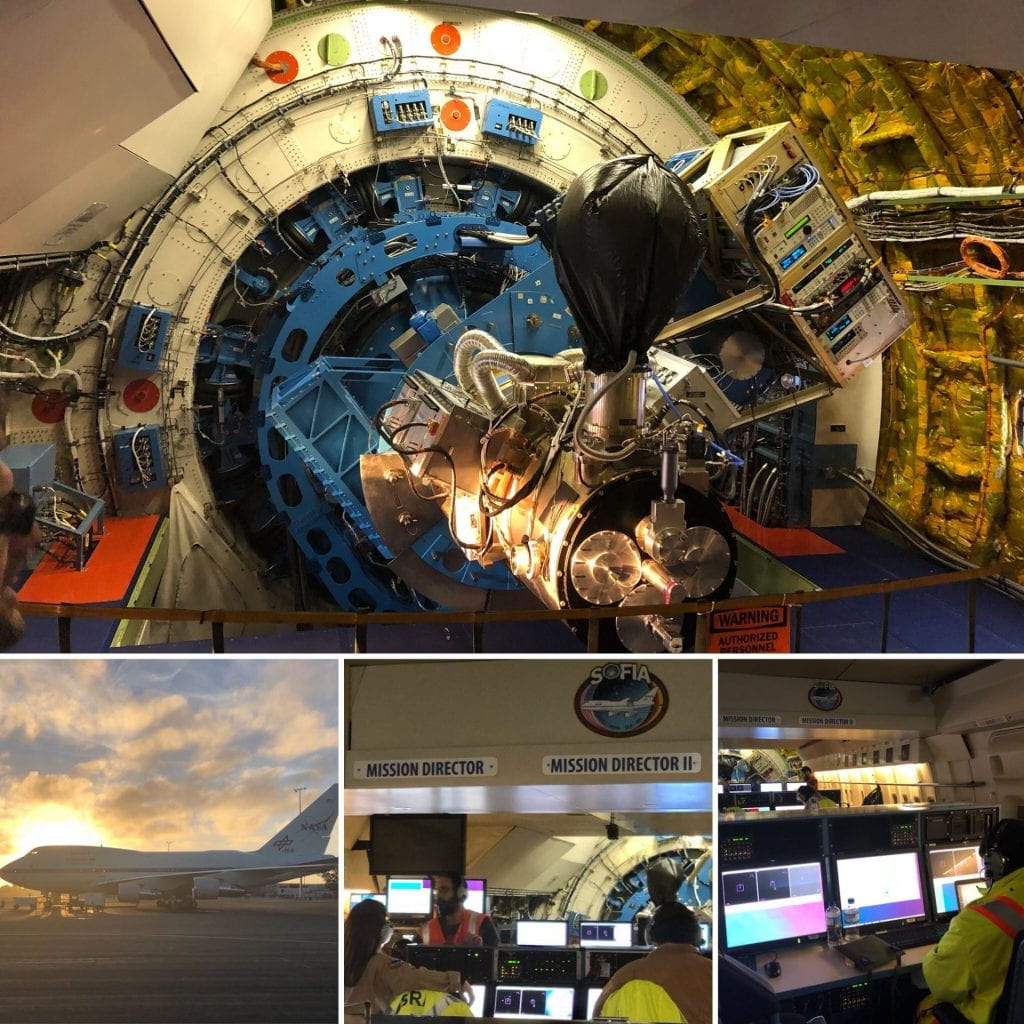
Pictures from the SOFIA mission Juliet flew on, run by NASA out of Christchurch Airport each winter.
Porirua
In Porirua, I first visited ESR and had an invigorating day learning about their research and the context in which it was carried out, with a unique profile of sensitive research carried out for entities like the NZ Police and the Ministry of Health. I then spent some time with Ian Lambie, the DSA for the Ministry of Justice, at the Justice Summit (read more about the Justice Summit) – not what I had previously imagined would be within scope of a science advice role, but it has been exciting to learn of all the ways in which evidence from the social sciences is being used to inform policy across the whole spectrum of government, and this was a great example of starting to put that work into practice.
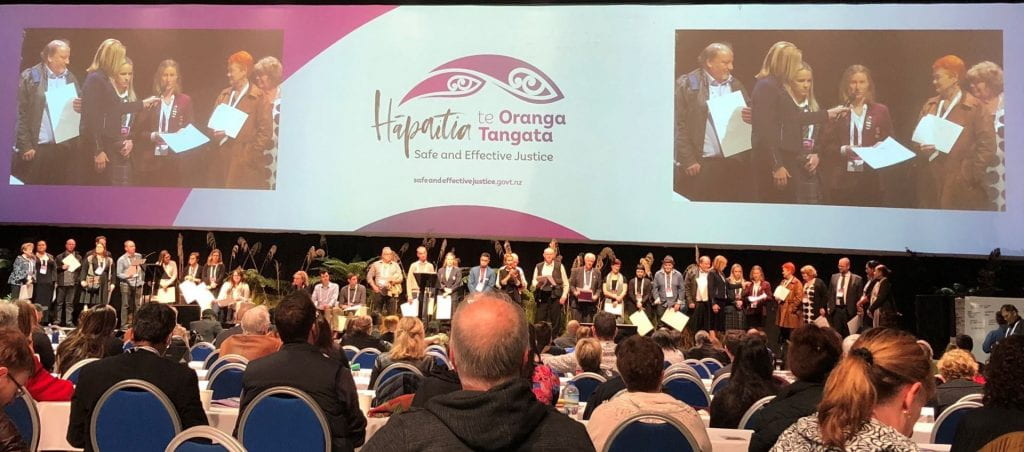
Justice Summit 2018
Kaitaia
I very much enjoyed spending the day in Kaitaia Hospital at the opening of this new research lab, Wahoroa ki te Toi, a collaboration between the Moko Foundation and the Maurice Wilkins Centre. Led by Dr Lance O’Sullivan and Prof Peter Shepherd, this is a community – led research initiative that seeks to understand how research can support the health of local communities. There is much to be learned here about how to create harmony between Western science and Te Ao Māori and I was honoured to attend. Tino pai!
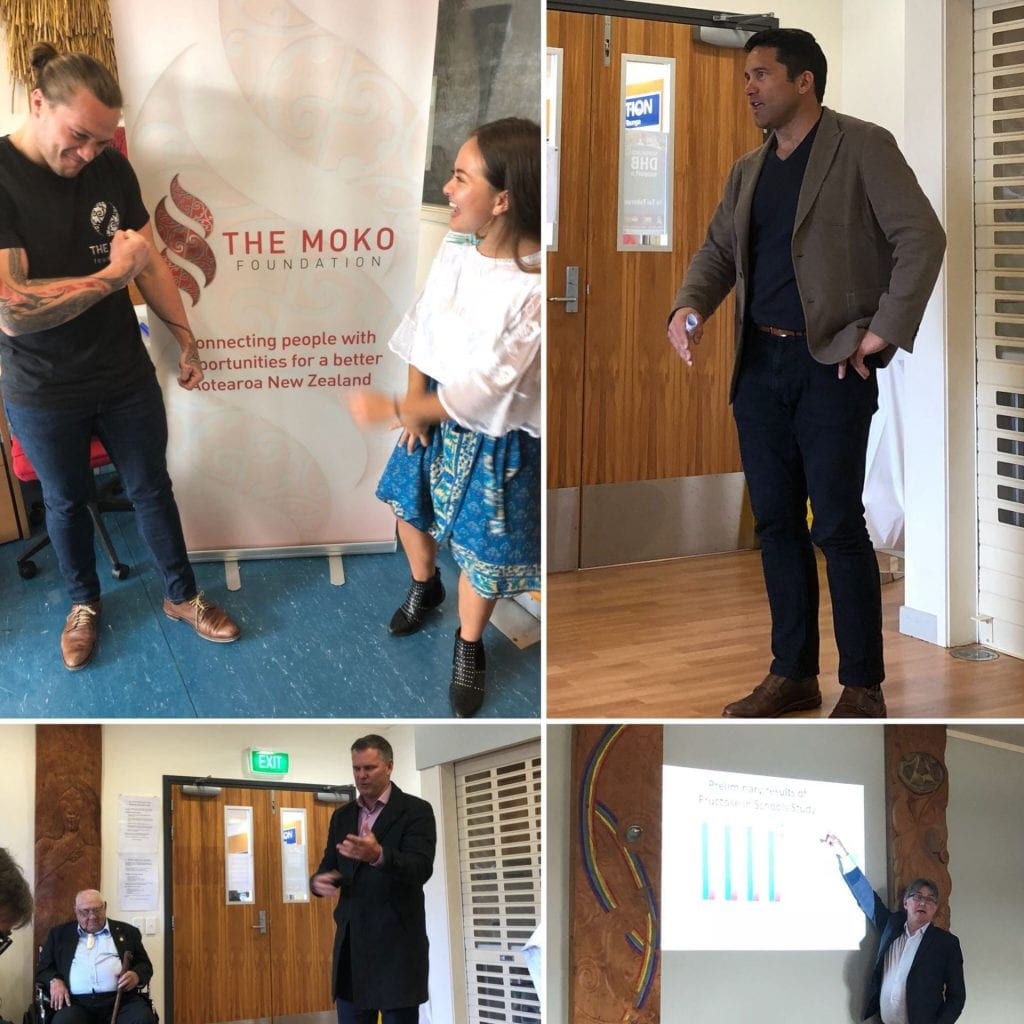
Photos from the opening of Wahoroa ki te Toi, the new research centre in Kaitaia that is a collaboration between the Moko Foundation, and the Maurice Wilkins Centre.
Alexandra, Manuherikia
At the other end of the country, I visited the Centre for Space Science Technology in Alexandria, and found a vibrant team of international researchers passionate about harvesting satellite data to benefit Aotearoa, New Zealand. Great to see the excitement in the local community, which I’m told peaked when the astronaut came to visit! I also took the opportunity to visit St Gerard’s School to hear about one of the Participatory Science Programme projects based there. The team was very excited to tell me about their fantastic river quality project and contribute some ideas for the Prime Minister.
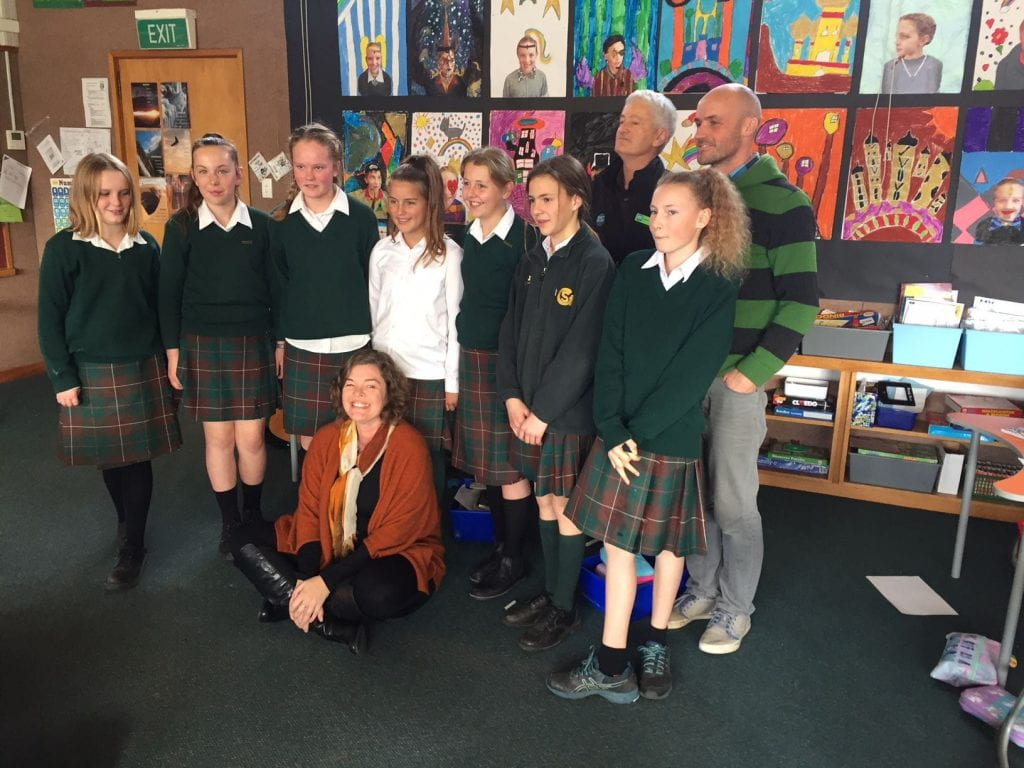
Juliet with students and staff at St Gerards School, Alexandra, Otago.
Hamilton, Kirikiriroa
At the University of Waikato I met with A/Professor Leonie Pihama and her colleagues at the Te Kotahi Research Institute to listen to ideas about how to make the work of the Office more inclusive of kaupapa Māori approaches. This will be a long journey along which we hope to take some significant steps and I am grateful for the warmth, openness and patience with which all the Māori researchers here and elsewhere have approached these conversations. It seems to me that many of the issues that Western science is facing, particularly in terms of failing trust in science, could be addressed using these approaches, and I look forward to exploring these ideas further. Ka pai.
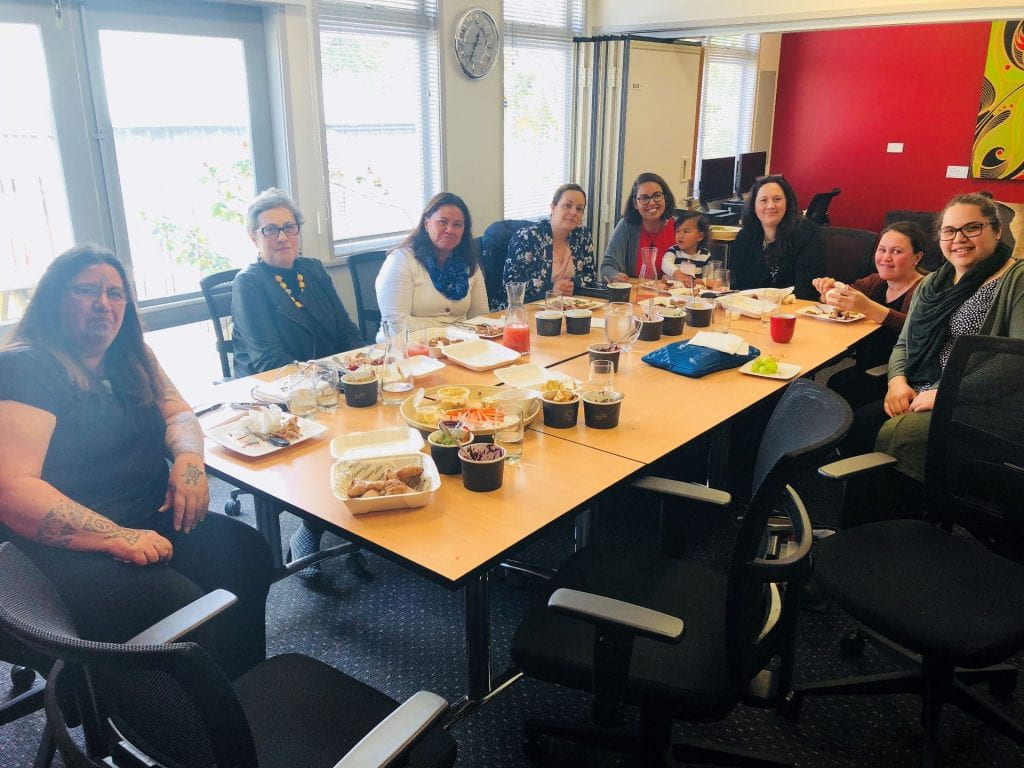
Members of the Te Kotahi Research Insititute at their meeting with Juilet.
